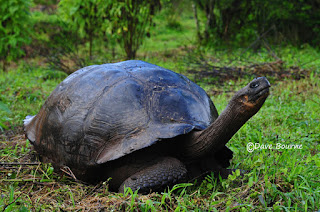The Blue-footy Booby is probably the most well known of the many species on the Galapagos Islands. It is easily recognizable by it’s distinctive blue feet.
Charles Darwin visited the islands in the 1830’s on his 5 year voyage on the Beagle. His observations and collections contributed to the inception of Darwin’s theory of evolution by natural selection. He published The Origin of Species in 1859. Darwin was the first to put forth the theory of sexual selection.
The males display their feet in an elaborate mating ritual by lifting them up and down while strutting before a female.


















































